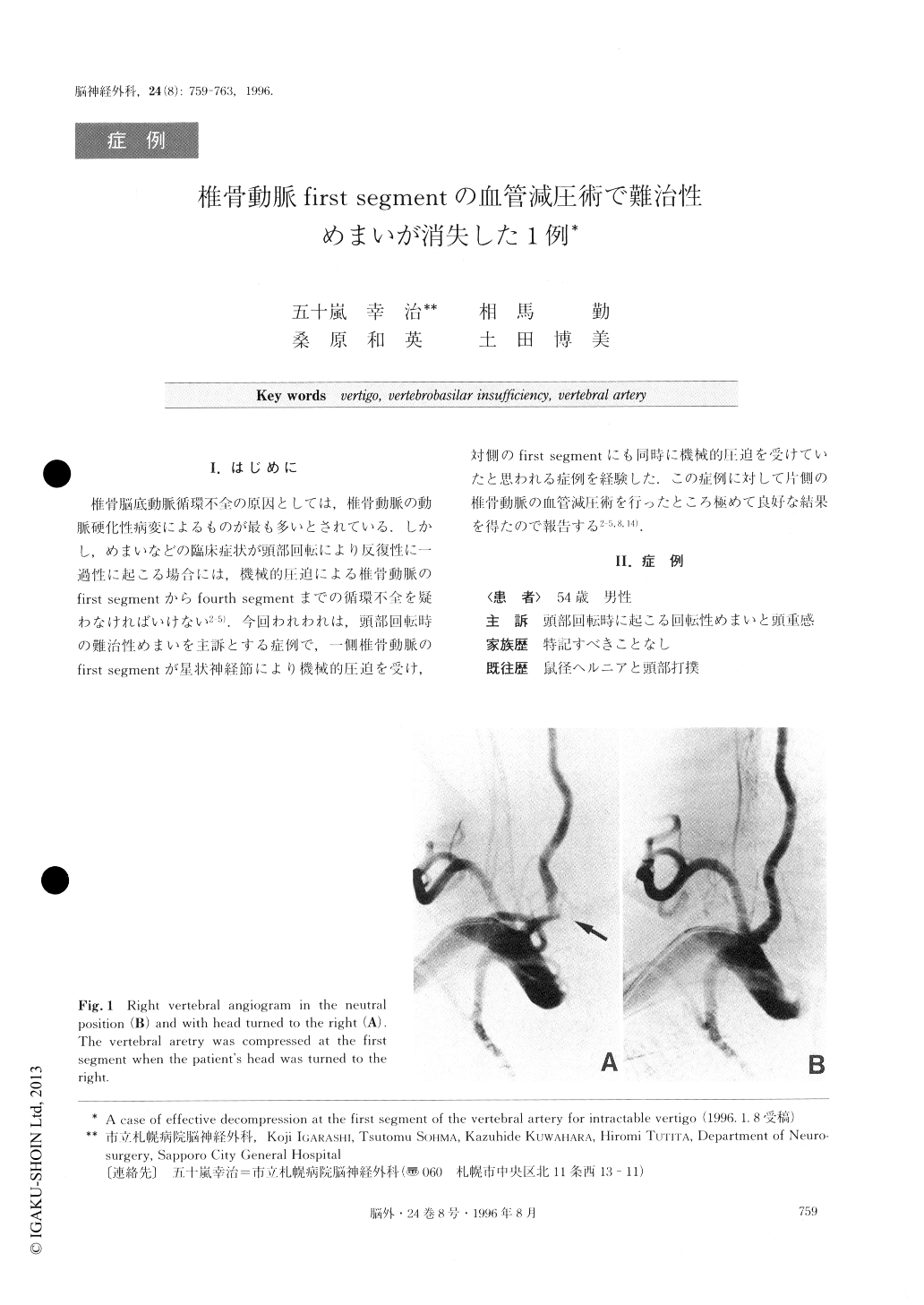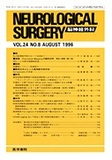Japanese
English
- 有料閲覧
- Abstract 文献概要
- 1ページ目 Look Inside
I.はじめに
椎骨脳底動脈循環不全の原因としては,椎骨動脈の動脈硬化性病変によるものが最も多いとされている.しかし,めまいなどの臨床症状が頭部回転により反復性に一過性に起こる場合には,機械的圧迫による椎骨動脈のfirst segmentからfourth segmentまでの循環不全を疑わなければいけない2-5).今回われわれは,頭部回転時の難治性めまいを主訴とする症例で,一側椎骨動脈のfirst segmentが星状神経節により機械的圧迫を受け,対側のfirst segmentにも同時に機械的圧迫を受けていたと思われる症例を経験した.この症例に対して片側の椎骨動脈の血管減圧術を行ったところ極めて良好な結果を得たので報告する2-5,8,14).
Atherosclerotic change is the main reason for verte-brobasilar insufficiency. However, if clinical symptoms such as vertigo happen transiently and repeatedly with head movement, vascular insufficiency due to mecha-nical compression of the vertebral artery must be kept in mind as its cause. The patient was a 54-year-old male complaining of recurrent vertigo which occurred during head rotation. He had been treated medically be-fore he came to our hospital. Right compressed verte-bral angiogram with head turned to the right and left compressed vertebral angiogram with head turned to the left were obtained at the first segment. Unilateral decompression of the vertebral artery was performed.At surgery it was found that the right vertebral artery was compressed by a stellate ganglion. After cutting of the sympathetic chains, the stellate ganglion was de-tached from the vertebral artery. The patient's intract-able vertigo immediately disappeared after this proce-dure. It is concluded that if severe vertigo or dizziness is repeated under certain conditions, we must perform a bilateral vertebral angiogram and differentiate whether it is a case of decompression or not and then take mesaures to bring about decompression effectively.

Copyright © 1996, Igaku-Shoin Ltd. All rights reserved.


